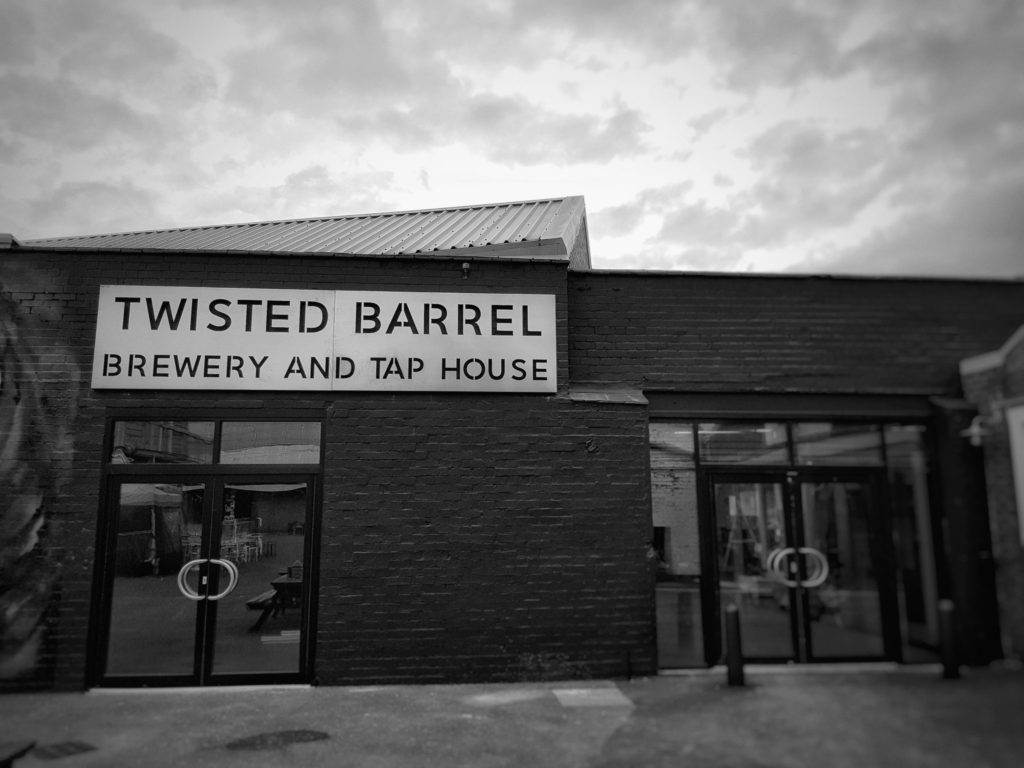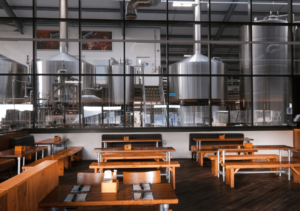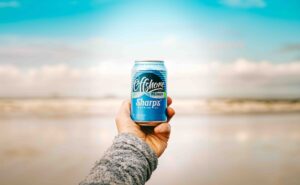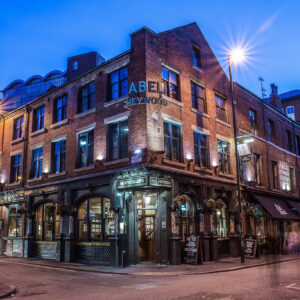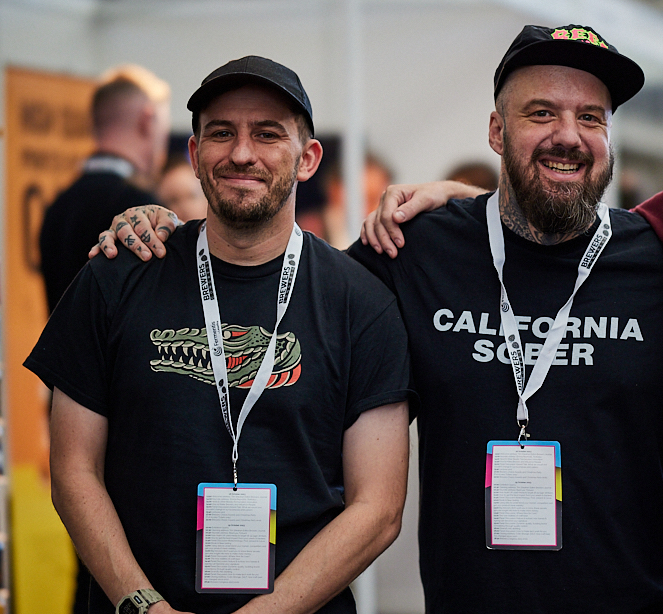You’ve been bashing your head trying to get your beer into pubs or supermarket shelves. Don’t chase after your customers, let them run to you. Velo Mitrovich reports on why you need a taproom.
If there is one thing the big boys have done well and that’s creating an invisible brewer and brewery. Like something out of an H.G. Wells novel, someone, something, without form or body, creates beer which ends up in your local pub or supermarket.
Who is this mysterious Mr Stella or Guinness? The average punter doesn’t know or care, but with two-for-one, three for £5 at the supermarkets, he can’t be all bad.
But what worked for grandma or pop when it came for beer, isn’t necessarily working today, especially for the under 35-year-old crowd. These are the people who want a connection between the producer – be it a farmer or a brewer – and themselves in regards to what they eat and drink. They’re willing to pay more to know exactly what farm the cattle were raised on to create that perfect burger, or to know their local brewer by name.
If you want to reach these people and their wallets, you need a taproom.
“For me, the tap house is the main driver of our business,” Ritchie Bosworth of Coventry’s Twisted Barrel Ale Brewery and Tap House tells Brewers Journal. “I genuinely do not know how any brewery survives without one. It gives us instant cash flow with an extra margin.”
What is interesting is reading about breweries in the States which have gone bust is, in almost all cases, the brewery owner said: “I should have just stuck with the taproom”
The advantages of having a taproom are almost too numerous to list. You will have total and complete control over the quality of your beer – no more sleepless nights wondering if in the middle of summer your delivery service is storing your kegs in a hot-as-hell warehouse.
When you sell to a bottle shop, pub, or supermarket, you’re selling at the lowest wholesale price they can wrangle from you. People come in to your taproom, they’re paying full price.
You got into brewing because you like being a brewer. You like beer; you like experimenting with it, you’re willing to try something crazy, something no one else is doing, because that’s just the way you are. There is an apple tree blooming outside your door, sure, why not, use the blossoms to create your new sour’s bacterium. Pubs, with limited room, are they really going to take on a barrel of Apple Magic? But you can with your tap room.
And the beauty, too, you’ll get instant feedback from your customers.
There are many taprooms out there ranging from brilliant to questionable sanity. One, however, which really stands out to Brewers Journal, is in Coventry.
Brewery or pub?
A problem – which to nobody else sounds like a problem – is how Ritchie Bosworth describes the success of Twisted’s first taproom.
“Our taproom was wildly successful, we had a ridiculously busy opening day,” he says. “We hadn’t opened a brewery; we had opened a bar with a brewery in the back.”
The Twisted team had figured that at best, on weekends they’d see around 10, 15, maybe even 20 customers at best, beer nerds looking for something new to put in their notebooks.
Not that they were complaining with the crowd.
In many ways Coventry was ripe for the pickings when it came to a taproom – a situation that not all of you might experience. The big breweries had a stranglehold on Coventry, controlling what went into pubs and supermarkets, that there was no place for craft brewers to sell. And indeed, Bosworth says that this still hasn’t changed, with Twisted having only one or two customers inside Coventry.
“If you wanted to try craft beer, there was nobody you could go,” he says. That was, until Twisted opened their doors.
To add to Twisted’s luck was that a new hip restaurant, artist, tattoo, centre had just opened in Coventry, FarGo Village.
Located in a repurposed industrial space in Coventry City Centre, FarGo describes itself as: “Designed exclusively for creative, independent businesses and like-minded visitors.”
The people running FarGo had just been to London and saw something similar to what they were creating but with one difference, the centre in London had a brewery and taproom. It was Bosworth’s continued good fortune to knock on their door with his idea, just a few days after the FarGo team returned from London.
“Because we’re not in an industrial estate or located on the outskirts of town, we have a very diverse crowd, which not all taprooms have,” he says. “We have students from here and abroad, locals of all ages, just a good crowd that is a lot more welcoming than those in the typical British boozer.”
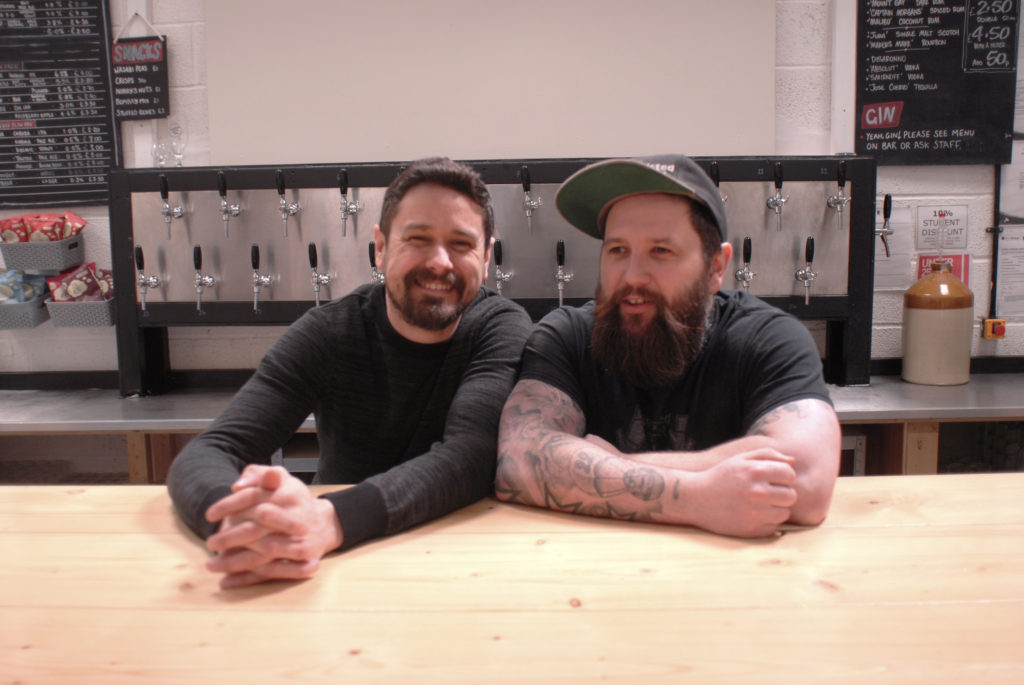
The first year Twisted made 80 percent of their revenue from the taproom, which had 14 lines, could hold 40 people, had one toilet and was open twice a week. This changed the following year to around 50/50 in taproom and outside sales.
Seeing the writing on the wall, they expanded the taproom – now calling it a tap house – and did this pretty quickly. With their larger space, they now can comfortably hold 160 people (but have held as many as 250 for a New Year’s Eve bash), 24 lines of beer, have eight toilets, and are open five days a week.
An advantage of being in FarGo is that you can take your beer anywhere in the premise, which in essence, has expanded the size of their tap house to one acre.
Food consists of snacks and some simple fried items, all vegan. This serves the purpose of keeping customers in their seats for a few hours. For various reasons, while beer can go out, outside purchased food cannot come in.
While some taprooms have done it, Bosworth questions if you start having full meals, does that mean you’re now a restaurant?
“When you’re in a small business without the means to focus on everything, you need to focus on what you’re good at,” he says. “That’s why we’re never going to focus full-on into food.”
[To listen to the interview with Ritchie Bosworth, go to the Brewers Journal podcast.]
10 things to ask before pouring that first pint
What will be your draw? How will you be any better than your local pub?
At one taproom, all they did was to try to create the exact same types of beer that their local was selling. What is the point of going there? How are you going to offer people a unique drinking experience? Love them or hate them, but Starbucks created a destination for coffee. When you think about it, all coffee is are roasted beans, ground, mixed with hot water and there you have it, coffee. However, by putting in comfortable seats, low tables, slightly hip music, Starbucks turned coffee drinking into an experience.
What are you going to put into the community?
Like how a successful pub is part of the community, are you willing to do the same? Are you going to offer locals a comfortable place where they can enjoy great beer and great conversation with friends? Will you open it to community events? Have bands playing? How close are neighbours? Is it a religious area?
Do you have the staff to run it?
Everyone likes talking to the brewer, but after working a long full week, will your brewer also want to spend his or her weekends pulling pints? With a lot of you being two to four man-bands, you could be asking staff a lot.
Are you going to be dog friendly?
Do you want dogs in your taproom? People treat their dogs like valuable family members, on the other hand, people can be allergic to dogs. Plus, there is only one thing more annoying (see below) that two or three dogs yapping at each other.
Are you going to be kid friendly or adults only?
Some pubs go out of their way to attract families, knowing that little Buster will be getting bored and his parents will have to buy them something to eat or drink. These pubs will also often have outdoor or indoor playing areas for kids. Still, there is nothing so painful to the human ear than a toddler screaming their head off. Do you see your taproom as a sanctuary for escape, or somewhere to bring the whole gang?
Will you have food and/or a food service?
Have decent snacks and fast food and you’ll keep customers on their seats longer, but is food what you’re good at? Our suggestion, find a decent food truck operator and cut them a sweetheart deal.
How are people going to get to your taproom?
If you’re in or towards city centre, this isn’t an issue – although high rents are. If you’re in a small village or outer city industrial estate, is there any public transportation? Parking? Is personal safety an issue? While brewers in the UK seem to think at an outer industrial estate is the kiss of death for a taproom, this is not the case in the USA. Create great beer, create an enjoyable experience, and people will come.
What will you offer non-drinkers?
Kids, designated drivers, non-drinkers – they’re out there and you need to offer them something besides Diet Coke.
Are you licensed to sell beer on premises?
The UK has very liberal laws regarding this so this should be one of the least of your worries.
Are you insured?
People who drink are people who sometimes fall. You have kids at your place, it’s pack, you open part of the brewery for more space and little Johnny runs, hits a wet patch and falls on his face. Will your insurance cover people being in what might be construed as an industrial park? Your best mate is helping to pour pints, he keeps serving Jane who gets into her car and crashes. Will your insurance cover this?

